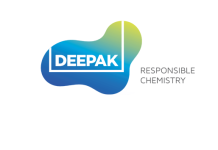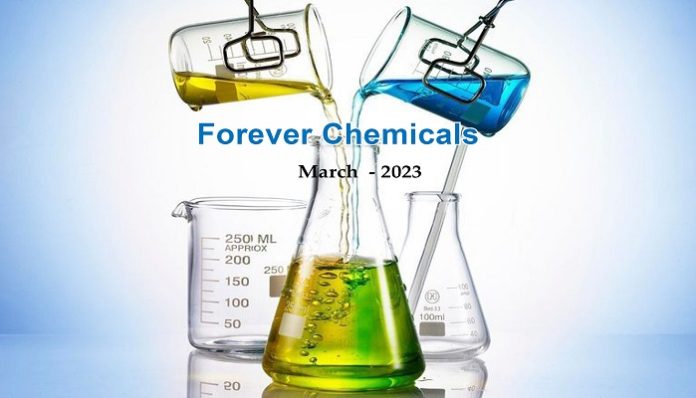The robustness of the C-F bond in per-and polyfluoroalkyl substances (PFAS) is a double-edged sword. While it confers many useful properties for a variety of applications, its persistence and longevity in the environment is a cause of huge concern. A concerted and holistic effort is required to address the responsible use of these “Forever Chemicals”.
A Diamond is Forever. This iconic tagline in the DeBeers campaign of 1947 helped boost the sale of diamonds. It continues to be one of the most loved brand slogans of all time. In an ironic turn of events, the Harvard researcher Joseph Allen coined the term “Forever Chemicals” in 2018 in a Washington Post op-ed. Allen was using the term pejoratively to describe a class of chemical compounds that persist in our environment to the detriment of our health. At the root of this is the unique property of the Carbon – Fluorine bond.
C-F Bond
Fluorine is the most electronegative element in the periodic table and when bound to carbon forms the strongest bond in organic chemistry. Due to the large electronegativity difference between carbon and fluorine, the C-F bond is polar and exceptionally strong. It is the strongest single bond between carbon and any element. The C-F bond dissociation energy is significantly more than that of the C-H bond in hydrocarbons. The unique properties of the C-F bond in various chemicals make them extremely useful in applications like pharmaceuticals, agrochemicals and material science. Fluorine-containing molecules are increasingly being used in the pharmaceutical industry due to their unique pharmacological properties. The C-F bond in these compounds can improve drug potency, stability, and bioavailability. Fluorine-containing pesticides and herbicides are highly effective due to the stability of the C-F bond. These compounds can resist degradation by sunlight, moisture, and microbial action, resulting in prolonged efficacy. The C-F bond in fluorocarbons provides excellent thermal stability, chemical inertness, and resistance to degradation. They are commonly used in refrigerants, aerosol propellants, and non-stick coatings.
PFAS
Per-and polyfluoroalkyl substances (PFAS), known colloquially as “Forever Chemicals”, are a group of more than 9000 chemicals that are highly persistent in the environment and resistant to degradation. PFAS compounds are composed of carbon and fluorine atoms and are characterised by strong carbon-fluorine bonds that make them highly stable and resistant to chemical breakdown. In conjunction with their ability to act as surfactants, these properties make PFAS ideal for diverse industrial and commercial applications. They are used in a wide range of products, including non-stick cookware, waterproof fabrics, stain-resistant carpets, food packaging, and firefighting foams, due to their unique properties of heat resistance, chemical stability, and water repellence. However, these same properties make them highly persistent in the environment and bioaccumulative in living organisms, including humans.
Impact on Health
The impact of PFAS on human health is a matter of growing concern, as these chemicals have been linked to a range of adverse health effects, including cancer, immune system dysfunction, developmental and reproductive toxicity, and hormonal disruption. Exposure to PFAS can occur through multiple pathways, including ingestion of contaminated food and water, inhalation of air emissions, and dermal contact with consumer products. Studies have shown that PFAS can accumulate in the blood,liver, and other organs of humans and wildlife, and that exposure to even low levels of these chemicals can have harmful effects on health. One of the most concerning aspects of PFAS is their potential to cause cancer. Several studies have shown that PFAS exposure is associated with an increased risk of certain types of cancer, including kidney and testicular cancer. The mechanisms by which PFAS may promote cancer development are not yet fully understood, but may involve their ability to damage DNA, disrupt cellular signalling pathways, or suppress the immune system.
Contamination
The main sources of PFAS contamination in the environment are industrial and commercial activities that use or produce these chemicals, as well as the disposal of products that contain them. For example, PFAS can enter the environment through wastewater discharges, landfill leachate, and air emissions from industrial facilities. They can also be released from products during use or disposal, leading to contamination of soil, water, and air. Once in the environment, PFAS can travel long distances and persist for decades or even centuries, accumulating in the food chain and exposing humans and wildlife to potential health risks. The concern with PFAS is that they can accumulate in the environment and in the human body, and exposure to high levels of PFAS has been linked to a range of health problems, including cancer, liver damage, thyroid disease, and developmental issues in foetuses and infants. As a result, there is growing concern about the widespread use and potential health risks of PFAS, and efforts are being made to limit their use and to clean up contamination in affected areas. US Environmental Protection Agency (EPA) is proposing to establish legally enforceable levels, for six PFAS in drinking water. EPA is also proposing health-based, non-enforceable Maximum Contaminant Levels for these six PFAS. The 6 PFAS include perfluorooctanoic acid (PFOA), perfluorooctane sulfonic acid (PFOS), perfluorononanoic acid (PFNA), hexafluoropropylene oxide dimer acid (HFPO-DA, commonly known as GenX Chemicals), perfluorohexane sulfonic acid (PFHxS), and perfluorobutane sulfonic acid (PFBS).
Treatment
Conventional water and wastewater treatment facilities are not capable of removing PFAS. There are various separation technologies that can be applied to wastewater once PFAS has been identified. Reverse osmosis, foam fractionation, ion-exchange resins and granulated activated carbon are the most common methods used to filter out PFAS. Waste products from these separation technologies including spent filter media and liquid PFAS concentrates are then sent to landfills or incinerated, which doesn’t destroy PFAS but rather transfers the compounds to other environmental matrices. The scientific community is actively engaged in developing technologies that can permanently destruct PFAS. These include electrochemical oxidation, incineration, sonolysis, photocatalysis and plasma-based treatment. Only the most aggressive and energy-intensive technologies are capable of breaking down PFAS. Therefore, cost-efficient treatment options for large volumes of contaminated water rely on coupling technologies that first separate and concentrate PFAS to reduce the volumes and make destructive treatment technologies viable. Today, destruction technologies like electrochemical oxidation and plasma have demonstrated abilities to breakdown the recalcitrant carbon-fluorine bonds. Hydrodynamic cavitation also shows lot of promise.
Epilogue
Currently the use of PFAS is diverse and widespread, even in consumer products where alternatives are available. The most effective way to prevent the release of PFAS into the environment is to reduce or eliminate their use in products and industrial processes. This could be achieved through product redesign, substitution with safer alternatives, or voluntary phase-outs by industry. Some companies have already made commitments to reduce or eliminate the use of PFAS in their products, and regulatory agencies could encourage this trend through incentives, regulations, or bans. A serious dialogue is required between all stakeholders to foster greater transparency to phase out PFAS in a time-bound and responsible manner.
Readers’ responses may be sent to:
k.sahasranaman@gmail.com or
chemindigest@gmail.com
































